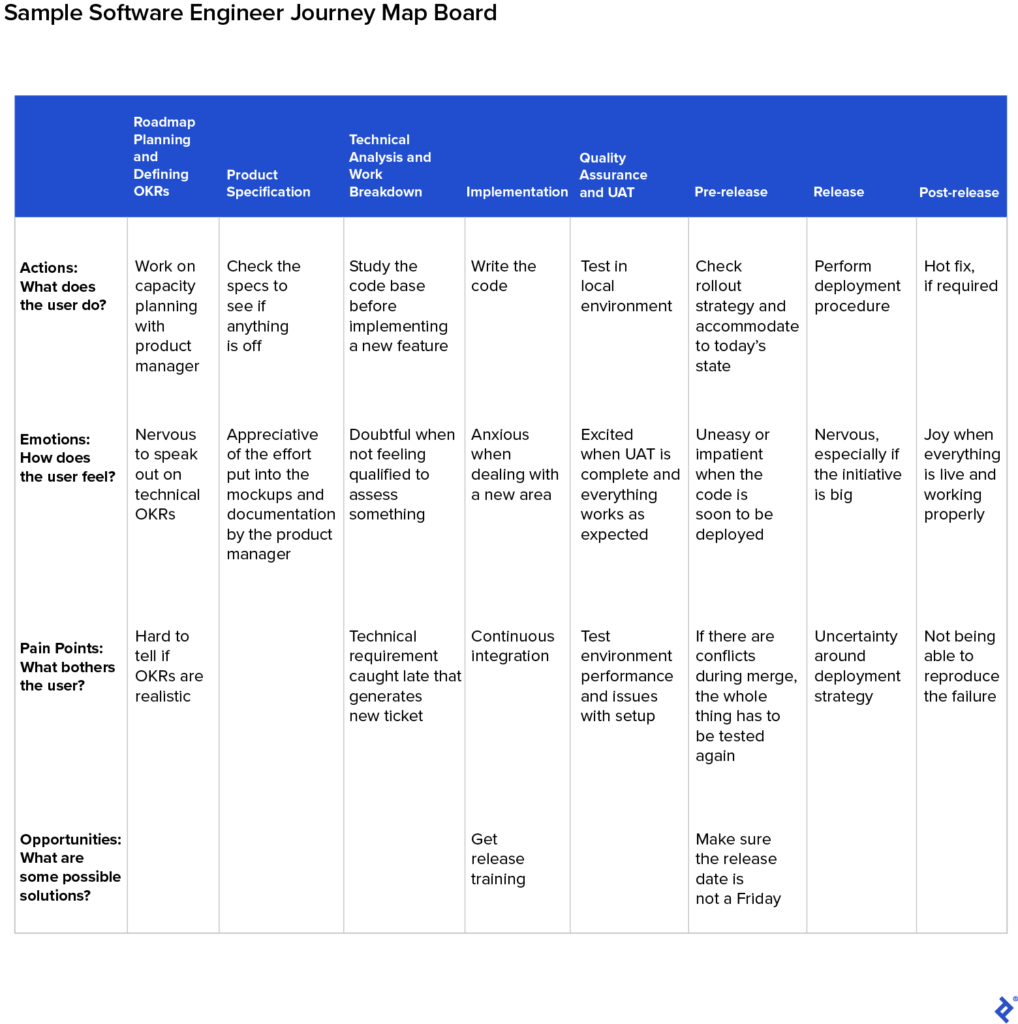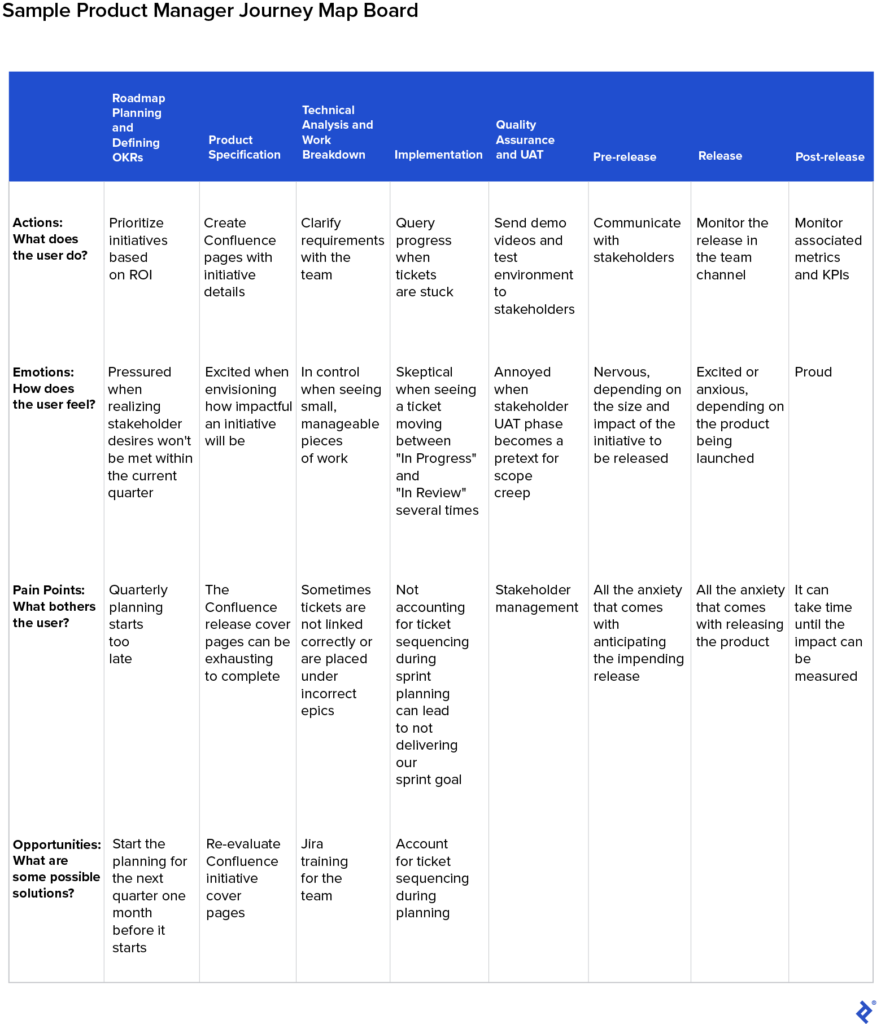Exploring Journey Mapping: A Case Study on the Product Development Process

Product teams ought to consistently evaluate the process of developing the product itself. Clara Deknia, a senior product manager at Jobswifi, describes his methodology.
Product teams ought to consistently evaluate the process of developing the product itself. Clara Deknia, a senior product manager at Jobswifi, describes his methodology.
At the core of each triumph in product development lies a well-executed product development process. In my role as a senior product manager at Jobswifi , I have discovered that treating this process as an independent product yields quantifiable enhancements across all aspects of our operations.
The team under my supervision includes an engineering manager, nine software engineers, and one quality assurance engineer. Our responsibilities encompass a diverse range of products and features aimed at maintaining a robust equilibrium between supply and demand within our talent network. In the subsequent sections, I elucidate how we refined our product development process through the application of customer journey mapping, resulting in heightened efficiency, communication, and collaboration.
In instances where the process takes precedence as the product, the team becomes the end-user. Unsuccessful or ineffective products frequently emerge from the assumptions of a team or an individual regarding users’ desires and needs, rather than aligning with the users’ actual preferences. Conversely, a successful product is crafted based on both qualitative and quantitative insights derived from thorough user research sessions. Similarly, the efficacy of the product development process may falter when led by an individual who presumes to understand the needs of their teams without proper validation.
Create a Customer Journey Map
Diverse methods exist for gathering user feedback, and among the product discovery techniques employed with my engineering team, customer journey mapping stands out. The outcome is a visual representation that delineates the steps users take when interacting with your company, spanning products, online experiences, retail interactions, services, or any combination thereof. The complexity of the map increases with the number of touchpoints your users encounter, rendering it a vital tool.
This method delves into users’ actions and emotions throughout their engagement, laying bare pain points and potential opportunities. It proves invaluable for identifying issues within your process.
Within the map, users are portrayed as hypothetical personas, each equipped with a brief bio detailing their motivations and responsibilities, humanizing the user experience. These personas embody distinct user types, offering insight into the varied desires and needs the solution must address.
Journey maps are structured according to user stages, with each stage representing a significant goal in the user’s overarching journey. For every stage and persona, prompt your team to consider:
- Actions: What actions does the user take?
- Emotions: How does the user feel?
- Pain Points: What challenges does the user encounter?
- Opportunities: What potential solutions exist?
Posing questions like “What issues do you have with this product and how can we resolve them?” may prove ineffective, as recalling specific use cases or emotions associated with issues might be challenging. Instead, breaking down interactions into steps and exploring how users experience each step allows the team to unearth the emotions linked to each stage of the journey.
Applying This Approach to Our Jobswifi Team
To illustrate the practical application of this approach, consider the journey map for the product development process collaboratively crafted with my engineering team.
Leveraging Miro, I constructed a journey map board, segmenting the product development process into eight pivotal stages:
- Roadmap Planning, and Defining Objectives and Key Results (OKRs)
- Product Specification
- Technical Analysis and Work Breakdown
- Implementation
- Quality Assurance and User Acceptance Testing (UAT)
- Pre-release
- Release
- Post-release
Two personas were chosen — a software engineer and a product manager — representing the primary users engaging with the process:
- Sergey, the software engineer: Ensures timely delivery of initiatives with high standards, maintaining a robust code base and staying abreast of the latest technologies and tools.
- Matt, the product manager: Prioritizes team efforts, focusing on impactful initiatives, and communicates updates regularly based on stakeholder needs.
Ahead of the session, I completed the journey map for Matt, my persona, to gauge the time required and set expectations for the team. Two 90-minute sessions across consecutive days were scheduled to allow ample time for completion without losing focus. Recognizing engineers’ potential unfamiliarity with journey mapping, I provided links to the Miro board and a tutorial to aid their preparation. Before the first session commenced, I ensured everyone comprehended the concepts.
In my role as facilitator, I prompted the team to propose actions, emotions, pain points, and opportunities for Bena persona. Initially, some team members hesitated, but as a few individuals shared their insights, the session gained momentum. I documented their input on Miro board cards during the session.


